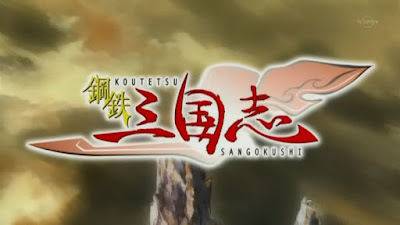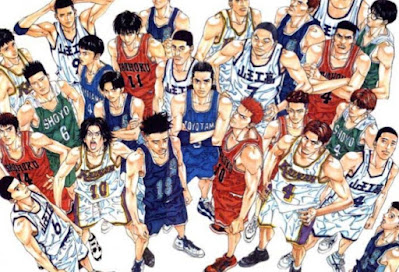 |
| The eyecatch is nothing more than black with the logo in the corner, so here's the iconic final shot of the OP sequence. |
By 1996 mangaka Nobuyuki Fukumoto was already a bit of a star in the industry, though admittedly more of a cult star. Having made his professional debut back in 1980 Fukumoto wouldn't really hit it "big" until 1989 when he debuted the mahjong manga Ten: The Nice Guy on the Path to Tenhou, followed by its prequel Akagi: The Genius Who Descended Into Darkness in 1991, which told the early days of a supporting character who was already a legend in Ten; in short, Fukumoto's forte was gambling manga. While some of his works would receive live-action movie adaptations in the 90s, namely Akagi & 1992's Silver & Gold, anime was understandably not something one would expect of his work, due to the subject matter, but in 2005 that all changed when Madhouse, VAP, & NTV debuted a late-night TV adaptation of Akagi. The Akagi anime did surprisingly well for a late-night anime, hitting as high as 4% in the ratings (in today's landscape that'd put it just below the iconic Chibi Maruko-chan!), so it was decided that Madhouse would follow up Akagi with another adaptation of a Fukumoto manga, one that wasn't quite as focused around mahjong (at least, not until way later on).
Debuting in early 1996 in the pages of Weekly Young Magazine, Kaiji would go on to become the most iconic work in Nobuyuki Fukumoto's entire career, with a current total of 91 volumes across six series, the most recent of which debuting in 2017 & is still running, though it's been on hiatus since 2023. The series details the trials & tribulations of Kaiji Ito, a man who is constantly self-destructive when it comes to money yet when put into life or death games of chance (with absurdly high financial payouts) is capable of seemingly impossible turnaround victories. On October 3, 2007 a TV anime adaptation of the first manga run (Gambling Apocalypse Kaiji, which ran from 1996 to 1999) debuted on NTV under the name Gyakkou Burai/The Suffering Pariah Kaiji: Ultimate Survivor, and adapted the entire initial 13-volume run in 26 episodes. When I originally reviewed the Kaiji anime back in February 2011 the show was still only really available via fansubs, outside of a short-lived "blink & you'll miss it" official English subbed stream on Joost (yeah, that service didn't last long), with a second season adapting the second manga run soon to debut in Japan. However, in July 2013 Crunchyroll announced that it was adding both seasons of Kaiji to its catalog, followed by Akagi getting added later that September. Meanwhile, 2008's One Outs, which was done by much of the same staff at Madhouse, got ignored seemingly because it wasn't based on a Fukumoto manga; ironic, since now some of that Madhouse staff is reuniting for a Lair Game adaptation.
Then, in late 2020, Sentai Filmworks announced that it had licensed both seasons of Kaiji for home video release (alongside a streaming option on its own Hidive service), with a sub-only BD boxset collecting both seasons together coming out in April 2021. Later, at Anime Expo 2022, Sentai announced that it would be dubbing Kaiji into English (though the announcement never seemed to clarify just how much of it they were dubbing), with the dub coming out in chunks starting later that November. Hidive would eventually offer the dub for all of Ultimate Survivor by the end of 2023, but it would take until December 2024 for Sentai to give Kaiji a new home video release, this time a dual-audio BD box set containing only Ultimate Survivor; there has been no word as to whether or not Season 2 (Against All Odds) will get similar treatment. Still, while I did review Kaiji: Against All Odds shortly after it originally finished airing in September 2011, so it's technically not eligible for an RiR re-review, I can at least give Kaiji: Ultimate Survivor a new watch, this time via the English dub, and see if the praise I gave it in that original review remains true, over 14 years later.















